Okay so previously I was a little bit active on Twitter and whatever happened in my career started because of Twitter. I got my first remote opportunity through Twitter. But during the lockdown, I stopped tweeting and my surface area of luck? It stopped. And, that’s why I’m planning to start posting on Twitter again.
I’m writing a blog post to provide an update on things I have been doing in the past and things going forward.
Early Days
When I first started out, my approach was simple: build small products and launch them on Product Hunt. That was my entire marketing strategy. I wasn’t thinking much about distribution, user acquisition, or retention — just about building, launching, and moving on to the next idea.
It was exciting in the beginning. Each launch gave me a dopamine hit — new upvotes, some comments, a bit of traffic. But after a few of these cycles, I started to realize something was off. While launching felt good, it wasn’t sustainable. The products weren’t growing, and I didn’t know how to reach the right users beyond launch day.
Although I was a marketer myself, I was confused on getting the first initial customers, the customers you get through doing things that don’t scale or maybe keeping faith in the product until it works.
My side projects: Published & VerifyRight
After launching small products, I decided to take some time and build a product targeting a big market. The idea for Published started to take shape during the lockdown.
At the time, I was part of a few online communities. I was exploring marketing communities and found myself in places like Dave Gerhardt’s Exit Five and Swipe Files. Being active in those communities made me realize how powerful niche communities can be — but also how broken the platforms were. People were juggling between Patreon, Circle, Discord, and a bunch of other tools just to make things work.
That got me thinking.
I became more and more curious about the creator economy — how independent creators were building niche audiences, launching products, and creating content without needing massive infrastructure. I started reading to understand more about it: blog posts like Mapping the Creator Economy and The Creator Lifecycle: How can you turn your audience into an empire? gave me more perspective.
What I saw was a mess. Platforms like Patreon weren’t solving the core problems. Creators didn’t own their payment data. They couldn’t use their own custom domains. The UX was clunky. One example that really stuck with me: if someone subscribed to a creator near the end of the month, they’d be charged again at the start of the next month. That felt completely wrong — and creators had no control over it.
That’s when I decided I wanted to build something better.
I started working on Published — a platform where creators could have everything in one place. Live streams. Events. Blogs. Podcasts. Videos. Forums. All under their brand. All under their domain. The idea was to help creators build their own Disneyland — a home for their audience, content, and community.
This was back in 2021 — and at that time, it felt like a big and exciting leap into something that really mattered.
From Research to Reality
I knew from the beginning that I shouldn’t jump into building the product straight away. I’d read enough startup advice to understand the importance of talking to customers first — figuring out who you’re building for, not just what you’re building.
The problem was: I didn’t know any creators. I had no warm contacts. I tried cold emailing people, but it didn’t work. No one responded — and I didn’t have a compelling reason for them to talk to me. Just saying “I’m building something and want to learn more” wasn’t enough.
But I had to start somewhere. I created a spreadsheet and mapped out different types of creators and customer segments. For each, I asked myself:
- Why would this segment use the product?
- How easy is it to reach them?
- How strong are the existing alternatives for them?
- If I win this segment, how transferable is the product to others?
Once I narrowed it down a bit, I started looking for ways to talk to these people. That’s when I came across SuperPeer — a platform where you could book calls with creators. But there was no explore or search page, so I wrote a small script to scrape their sitemap, gather bios and social links, and filter creators based on specific keywords in their bios.
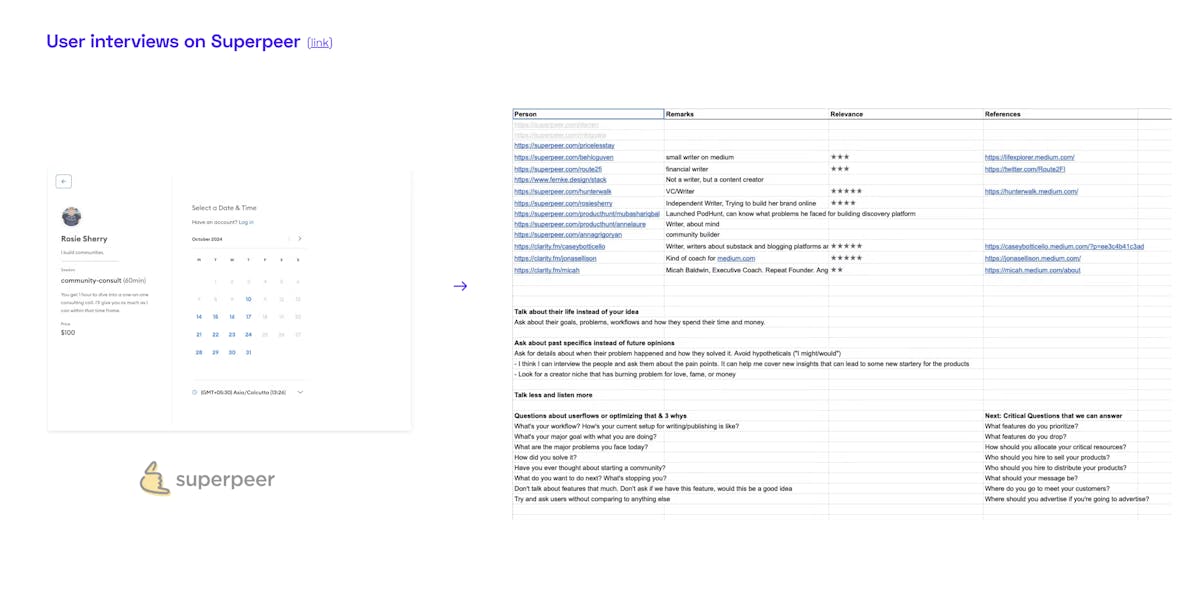
I then booked paid calls with some of them. I just wanted to understand what was on their mind — how they think, how they operate, what problems they face.
After these calls, I created a customer persona diagram to organize what I learned. With a clearer picture of my ideal user, I started sketching out product flows and hired a designer from Upwork to help bring it to life.
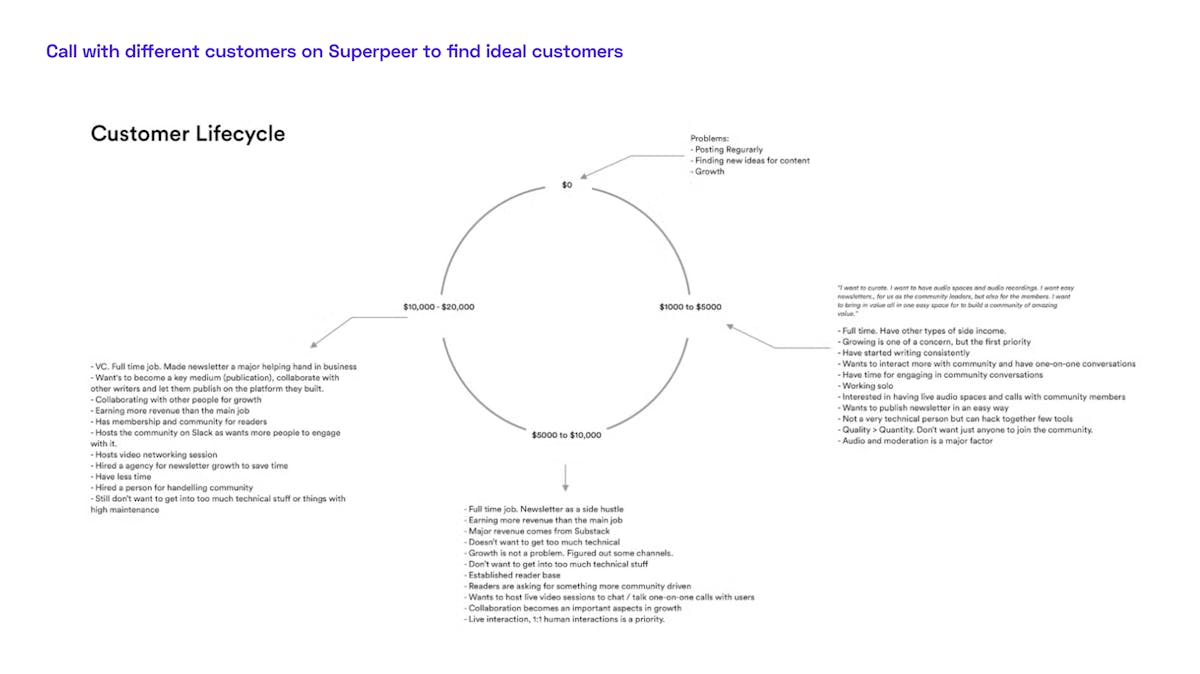
But the product I was building wasn’t simple. It wasn’t an MVP in the traditional sense. There were real technical challenges:
- Setting up creator payments.
- Allowing a single card to work across multiple creators.
- Syncing card data with each creator’s Stripe account.
- Supporting custom domains for creator profiles.
And to be honest, I’m still unsure what “MVP” even means these days. So while I called it an MVP, the product I envisioned wasn’t really minimal — it had to feel complete and reliable to stand a chance.Tweet
Back then, I had only built smaller tools using jQuery and Node.js. This was way more complex — it required proper engineering, security, architecture, and scalability.
I didn’t have that skill set, so I brought on a few people through a friend. They were fresh out of college and working full-time jobs, taking on my project after hours. That’s where things started to fall apart.
They estimated 30 days for the first version (with limited features). Looking back, that was a rookie mistake — both on their part and mine. I didn’t know better. I wasn’t technically sound enough to question the estimate. And of course, the 30 days stretched to months. Then more.
After a year and a half, we still weren’t close to launching. That’s when I decided to stop relying on others and learn to build it myself.
I went all in. I taught myself React, Next.js, learned how Git branching works, how to use a ticketing system, how to assign and manage tasks, and even tackled AWS infrastructure on my own. I used ChatGPT extensively to fill gaps and accelerate my learning. (Somewhere in between ChatGPT was launched)
But building everything solo took a lot of time — and over time, I started losing the edge. The creator economy space moved fast. Competitors started rolling out features similar to mine. Cursor and other AI tools were still not around back then, so everything took longer.
After building a more trimmed down version and creating a nice looking landing page, I tried cold emailing a few creators on Patreon. I used ChatGPT to help me write personalized, creative messages for 100 creators automatically. I ran small email campaigns — but got no responses. Nothing moved.
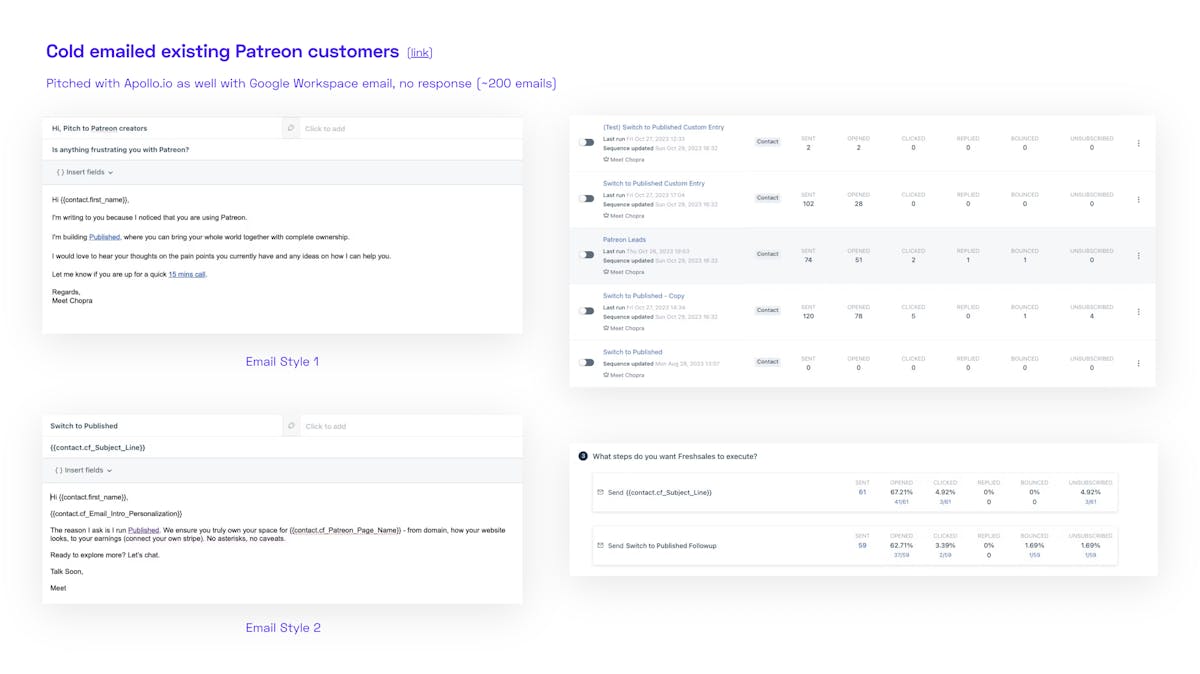
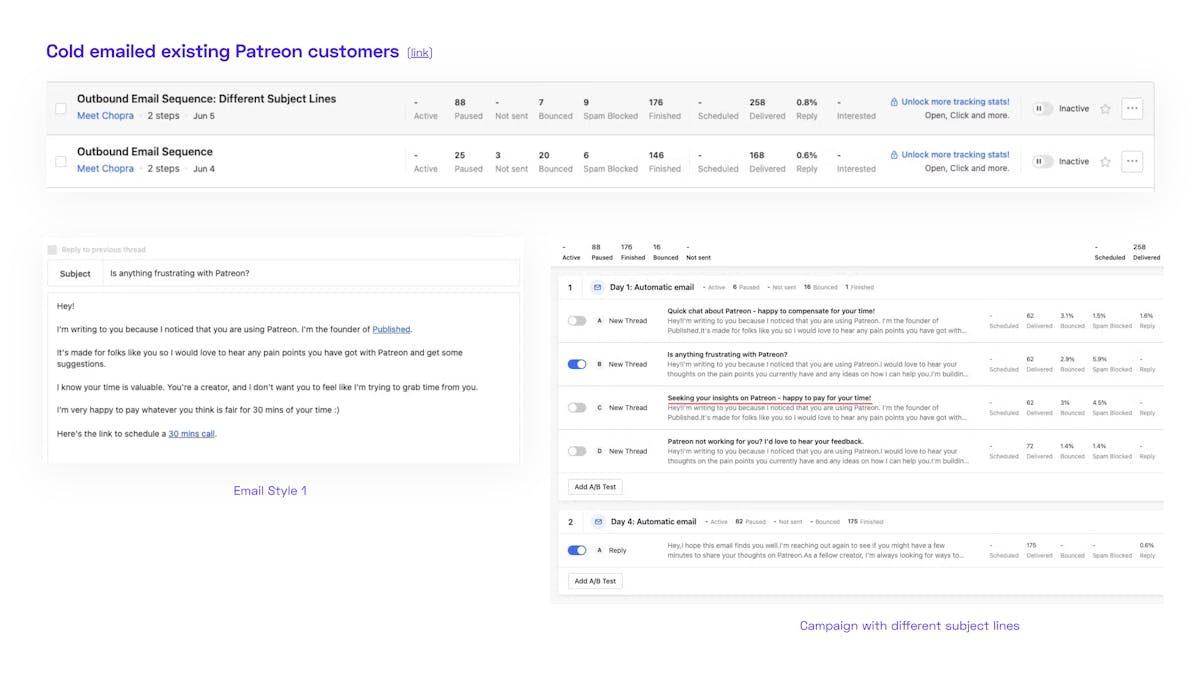
That’s when I realized: getting your first few customers is a totally different game for Published. It would require me to work on long term and creative marketing strategies to acquire the first few initial customers.
But after spending so much time and effort, and watching others catch up, I was burned out. The momentum was gone. And, I paused, Published.
While all of this was happening with Published — the research, the building, the burnout — I had another product quietly sitting in the background: VerifyRight.
It was something I had launched before the pandemic. I didn’t market it much, didn’t build a big roadmap for it, and honestly wasn’t paying a lot of attention. But I kept it alive — maintaining it lightly, fixing bugs here and there. I never really considered it “active.”
One day, out of curiosity, I checked the dashboard.
Over 2,500 people had signed up.

That got my attention.
The product had somehow grown on its own — without much effort from me. People were clearly using it and finding value in it, even in its basic form. That gave me the push I needed. At a time when Published felt heavy and hard to move forward, Verifier felt light and full of possibilities.
So I decided to revive it — with a new name, a clearer vision, and a fresh mindset. I renamed it to VerifyRight.
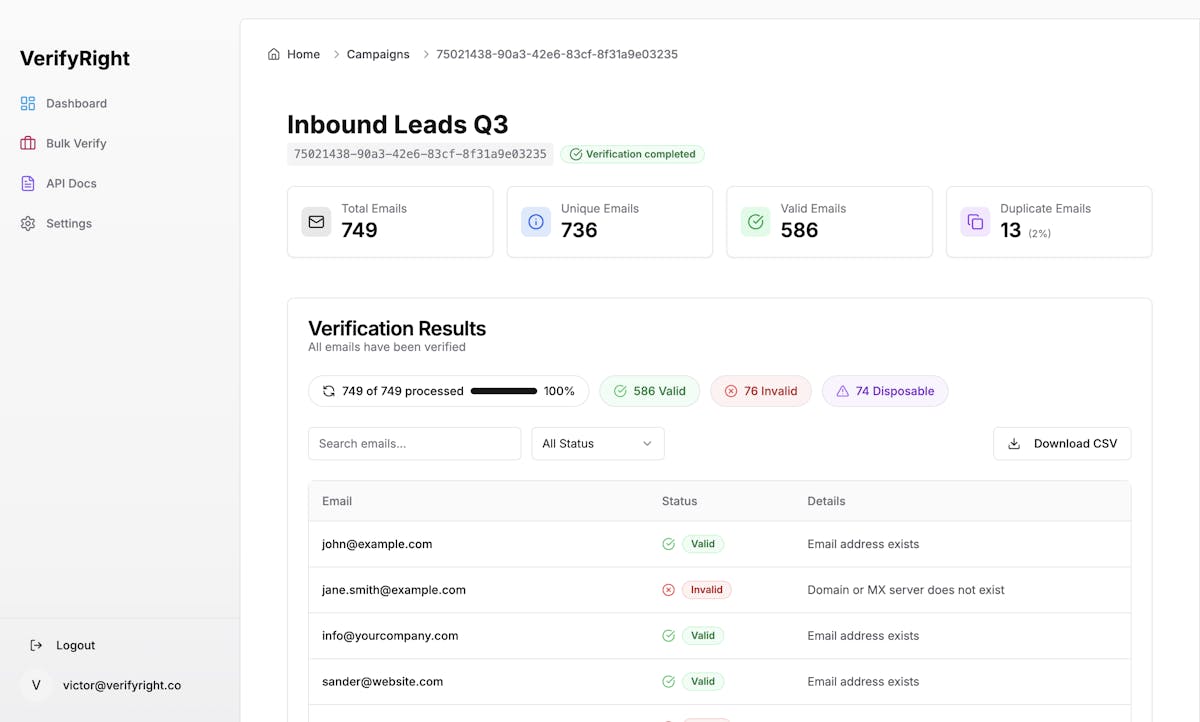
The first thing I did was fix the onboarding. A few people had reached out saying the sign-up flow was broken. So I jumped in and got that sorted.
Then I added a new feature I had wanted to build for a while: bulk verification. It was fast — really fast. Faster than most of the tools I had benchmarked it against. And that became the new foundation to build on top of.
The difference this time was that I already had users. I already had a working product. And I already had some sense of what people wanted — because they were already using it.
So while Published is paused right now, I turned have my attention to VerifyRight.